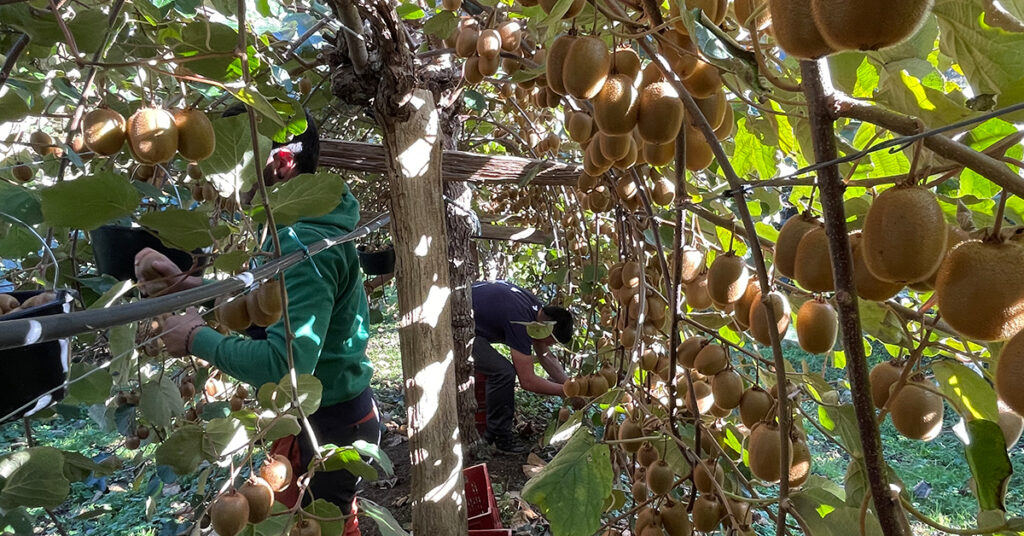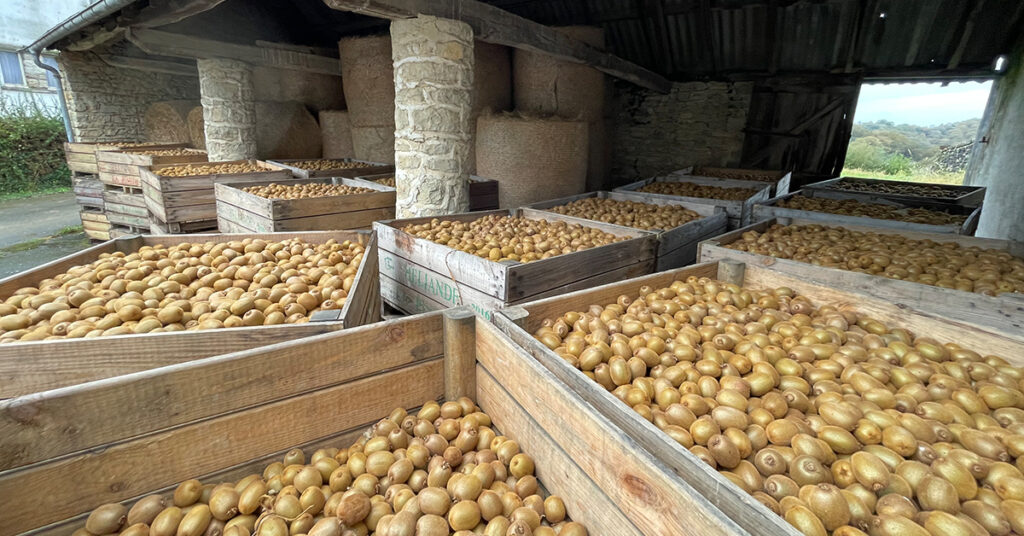Basque ethnography at a glance
As summer gives way to autumn, the farming and livestock cycle follows its course in Zuberoa. The sheep are brought down from the mountain uplands and are sheared on days known as Bixkarka. The first lambs will be born in the folds during the coming weeks. When it comes to the crops, the corn cobs have filled out and ripened after several months of growth and will be harvested in October and November; and the apples, pears, sweet chestnuts and walnuts will be gathered from the fruit trees, along with grapes from the vines.
Some people believe that the kiwi is a winter fruit, but we should point out it is an autumn one, as that is when it is harvested. The characteristic appearance of the kiwi is down to the heat of the summer, but it is the chill of the autumn nights that causes the sugar to form in this fruit from New Zealand. They are ready to be harvested when the sugar has reached the desired level.
The kiwi harvest begins in November. Family members, friends and neighbours help out the small producers to be found in Zuberoa. The kiwi harvest is not such a physical job as gathering the grapes; as they can be picked standing up or kneeling down, and the plant’s branches protect the picker from the sun and the rain. After the fruit is first collected in baskets, tractors are then used to pile the fruit up in boxes than can weigh 300 kg. As the pickers work along the rows of kiwi plants, they tell stories or sing the traditional tunes of Zuberoa. They are enjoyable days.
Yet it should not be forgotten that the plants need to be cared for during the year in order to produce fruit. They have to be pruned in winter, cutting back those that have already fruited and keep those that will. The first shoots appear in spring and the bees take care of cross-pollinating the male and female plants. The first fruit will appear after the plants have blossomed; the excess fruit will have to be thinned out to make sure that the kiwis have the right shape and appearance. Kiwis are the result of year-round work.
Kiwi production in Zuberoa began around 50 years ago. The fruit began to be grown along the banks of the River Aturrí in Aquitaine in the mid-20th century; the crop gradually spread to the part of Euskal Herria or greater Basque Region in Spain and also reached Zuberoa.
Even though it is an exotic fruit from New Zealand, the climate of the southern area of Aquitaine is very favourable for growing this fruit. Kiwis needs the cold of autumn and winter, and also the heat of summer. We should also not forget water; as the kiwi bushes have to be watered thoroughly in summer. Water from the River Aturri in Aquitaine and mainly from the River Ühaitza in Zuberoa is used for that task.
There are five or six producers in Zuberoa. They all grow green kiwi (also some red and yellow kiwi) and some of the producers use organic techniques.
Iker Uthurralt



